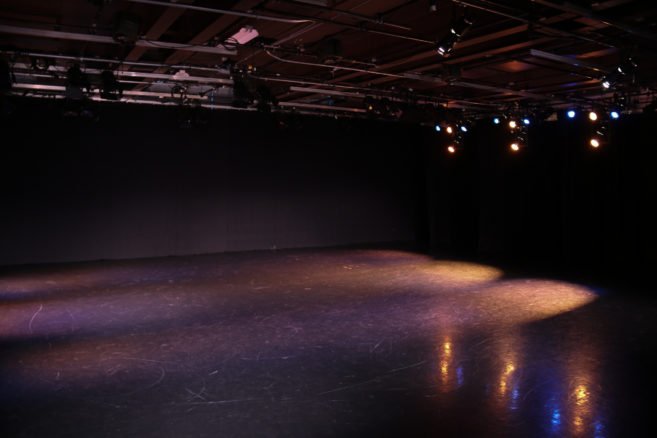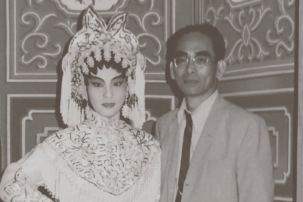What would it look like to intentionally equip art-school students to collectivize around common concerns and issues? What would it sound like to ensure that these students could understand their work in relation to the larger complexity of the world in which they find themselves? And what would it feel like to have students taking up more space in defining the trajectory of their own art educations?
I ask these questions because I believe that socially engaged art—which I practice and teach—is the future of art education. I believe this to be the case because the future of the post-secondary art-institution field hinges on an expansive understanding of what students might do when they graduate and what roles they need to take on across the communities in which they live. Socially engaged art both permits and holds space for an imagination in which graduating art students are contributors to a broad and diverse public, rather than simply suppliers of goods and services to a range of art dealers and gallerists, creative industries and corporations and even non-profit or institutional gallery directors and curators.
To fully understand the challenges of asking these kinds of questions, and of reimagining art school education in this way, we need to begin by looking at how the field of socially engaged art is hosted in colleges and universities today. In the context of post-secondary education, socially engaged art has drawn from two rather distinct approaches.
One approach builds on a history of community arts, where practitioners see the role of art as bridging, mediating and giving voice. This approach often links to the notion of service learning—that is, in this context, to a post-secondary art institution’s somewhat vague ambition to position students in service of a cause decidedly exterior to the institution itself. We might recognize the tactics of community arts in murals, video portraits, and accessible, repetitive material production linked to a larger formal composition, such as the hundreds of murals produced in the Philadelphia Mural Arts Program, and similar programs like it in Canada.
This branching of approaches is important to understand, as we can too often conflate the two, assuming that so long as “other people” are involved, it must be socially engaged art. Such a mindset dilutes the analysis we can bring to this kind of work, to be sure, but it also negates the more transformative potential of teaching and learning socially engaged art. In other words: we must not see the core competencies of a socially engaged artist as being their ability to bring artistic production into contact with people who do not identify as artists. This kind of misconception fails to do justice to the careful and long-term embedded work of artists such as Jeanne van Heeswijk, Hannah Jickling and Helen Reed, or Rick Lowe, and many other practitioners. What’s more, it also fails to take seriously the role of post-secondary education in preparing artists to work in context-specific and socially complex environments today.
Despite Canada’s history of artist-run culture and modest socialism—both productive contexts for thinking about where larger social imaginations have existed at a national scale in the past—our post-secondary institutions have yet to find meaningful ways to position socially engaged art as a practice befitting the needs of artists, students and citizens in the here and now. Post-secondary art institutions have also had very little to say so far about the significant histories of care, stewardship and collectivity embedded into the tenets of communities that blossom outside of the hegemony of white patriarchal capitalist centres. Instead, art schools relegate socially engaged art to minors, streams or one-off courses maintained as a peripheral concern to the “real work” of training emerging artists, designers and cultural producers.
Socially engaged art both permits and holds space for an imagination in which graduating art students are contributors to a broad and diverse public, rather than simply suppliers of goods and services to a range of art dealers and gallerists, creative industries and corporations and even non-profit or institutional gallery directors and curators.
It should be no surprise that long-time practitioners direct the most recognized post-secondary programs in socially engaged art and that they operate at the graduate level, where curricula are more flexible. In these spaces, sustained approaches to divergent teaching and learning can run relatively unencumbered. Teaching socially engaged art requires a different set of institutional, temporal and contextual circumstances in order to flourish. Its success also hinges on a divestment from the practices, jobs and outcomes that have reigned in the field of cultural production over the last 40 years: if we only teach students to aim for an artistic practice that requires either a commercial art market or a tiered gallery system to find value, we are ignoring the other things that artists can do—and indeed already do—in their communities, such as acting as neighbours, caretakers, politically engaged citizens, teachers and creative instigators.
In a learning environment focused on socially engaged art, one untethered from always being put in a position relative to “proper” studio practice or industry training, students would be able to attend to many important concerns: they might learn to clarify their intentions of thought and action, working to understand the socially interdependent complexities of civic life and their roles within it. They could study how other artists bring new and challenging points of view to long-established policies, practices and priorities. They’d be prompted to grapple with the ethical dimensions of being in publics and communities that they may not already know. They would learn to enact generosity and empathy in unexpected circumstances. They could try (again and again, not as a one-off, but as a sustained practice) to measure their efforts against the need to foster dignity and justice for all—instead of against the fleeting interests of a market, periodical or curator. They might do this by exercising many of the same skills required of them in other studio-based learning environments, but with an attention to where those skills unfold in practices of engagement, instead of in the process of producing “something else.” They could, in short, be prepared to enter a world that asks them to be so many things other than an artist. And in doing so—at least, this is my hope—art-school students and graduates would be able to bring transformative methodologies, empathies, and capacities to social life, industry and politics at all scales.
The value of imagining these concerns as being at the centre of the future of art education is that it could immensely expand what we expect from art students, art educators and post-secondary art institutions. These new expectations could then enable some incredibly urgent and necessary changes to the conditions under which we teach and learn art—in particular enabling the necessary change of decolonizing the infrastructures that too often limit our minds, bodies and relations.
Now, I write all this well aware of the many critiques that can and do circulate in regard to socially engaged art and artists. These criticisms can revolve around the limits of a project’s efficacy in addressing a particular social issue, or the commitment of the artist to the context in which they’re working, or the inattention to the aesthetic decisions that ultimately support and frame the project. Yes, there are socially engaged art projects that fail as much as there are paintings, public sculptures, new-media works and installations that fail. Indeed, there can be different stakes in that failure and there is a need to have a more nuanced understanding of the responsibilities of working across this field. But for me, this only enriches the challenge and opportunity to more meaningfully engage in teaching socially engaged art with a fuller understanding of the practice.
Socially engaged art, from my perspective, isn’t just a subject of a course, or a field awaiting further canonization—it’s a way to radically transform the role and potential of art school. And, more importantly, it’s a way to do justice to the incredible range of things we need emerging artists do in the world. All we need to do is truly support their learning about art and the world—and then get out of the way.

 The Social Practice Kitchen is a weekly student-led by-donation community kitchen at Emily Carr University of Art and Design. SPK invites students, staff, and faculty to create meals. Photo: Facebook/Arts in Society Research Network.
The Social Practice Kitchen is a weekly student-led by-donation community kitchen at Emily Carr University of Art and Design. SPK invites students, staff, and faculty to create meals. Photo: Facebook/Arts in Society Research Network.






